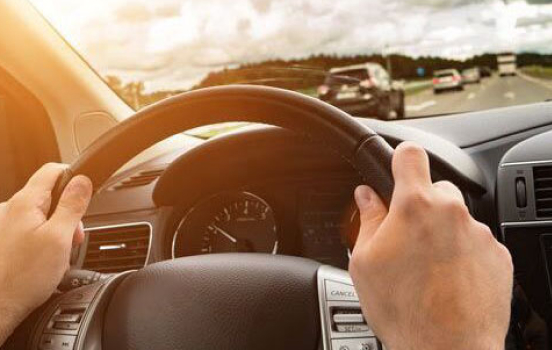AAA estimates that during this Christmas and New Year’s season, nearly 95 million Americans will hit the road, traveling long distances to visit friends and family. Unfortunately, during the end-of-year holiday travel period, nearly 27,900 Americans will be seriously injured in auto accidents, and more than 250 will die. With many hitting the road to visit friends and family this holiday season, it is imperative that drivers stay alert at all times. Drivers should practice defensive driving techniques, to ensure that they remain safe and avoid accidents. Following these 10 effective steps may just save your life.
- Stay focused, keeping your hands on the wheel. Defensive drivers concentrate on the road, keeping their hands at the 10 o’clock-2 o’clock position. They don’t do other tasks while driving, some of which are illegal. These include:
- Eating
- Applying makeup
- Holding a dog
- Tending to a child
- Operating a handheld cell phone
- Texting
- Keep your eyes moving. Continuously look in your mirrors and scan the road ahead, checking for hazards and slowing traffic so you can anticipate problems before they develop.
- Stay alert. Don’t drive if you’re tired or upset.
- Go with the flow. Most drivers know that speeding is a major cause of accidents, but driving too slow can be dangerous, too. Drive at speeds that most other vehicles are going.
- Use the 2 second rule on heavily traveled roads to maintain adequate spacing with the car in front of you.
- Choose a fixed object on the road ahead of you.
- Count “1 independence, 2 independence” when the car in front of you goes by the object. If you pass the same object before you’re done counting, slow down a bit. The 2 second rule helps reduce the chance of a rear-end collision when cars in front make sudden stops.
- Make yourself visible. Many accidents occur because drivers didn’t see the other car. There are a few simple ways to make your presence known, making the road safer for everyone. They include:
- Turn signals: Use your turn signals to let other drivers know where you’re going. By using your blinkers, other drivers will be able to anticipate your actions and slow down safely.
- Headlights: Turn on your headlights at dusk or anytime it is raining. This is more for other drivers to see you than for you to see the road. In some states it is illegal to drive without your headlights on while the windshield wipers are in operation.
- Brake lights: Operational brake lights are a safety must. They warn cars behind you that you’re slowing down, signaling them to reduce speed, too.
- Avoid blind spots: Don’t linger in areas where the driver in front of you can’t see you. Many people will only check their mirrors before making a lane change. If you’re lurking slightly behind and a lane away from another vehicle, assume that the driver of that car can’t see you. Either safely speed up or slow down to avoid this scenario, which often results in an accident. This is an important defensive-driving technique.
- Resist road rage. Aggressive drivers may infuriate you, but retaliating with similar tactics is dangerous.
- Adapt to road conditions. Even light rain can produce dangerous conditions, particularly early in the season when the water picks up oil from the road surface, making it slippery. Tires lose their grip at higher speeds, so slowing down in inclement weather is a fundamental defensive-driving technique.
- Familiarize yourself with traffic rules. Refresh your memory by browsing a Department of Motor Vehicles pamphlet detailing the rules of the road. It provides guidelines on rights of way, road signs, traffic law, and contains tips on safe driving.
- Avoid Rear-Enders in Intersections: Move only when it is clear. Sometimes an intersection gets backed up with traffic.
- If you’re the first car to go at green, make sure traffic on the other side of the intersection that you are moving into has cleared before you decide to go. This can prevent you from getting in a situation where you might get T-boned if you get stuck or stalled in an intersection.
- Turning into an intersection: a lot of rear-end collisions happen when the driver behind you assumes you are going to complete the turn, even if traffic is backed up.
- Give yourself enough room: if you must stop an an intersection, slow down carefully and keep distance from any other cars that have yet to complete the intersection. If the person behind you ‘flip-flops’ and rear-ends your car, you’ll save yourself the trouble the car in front of you is not involved.

